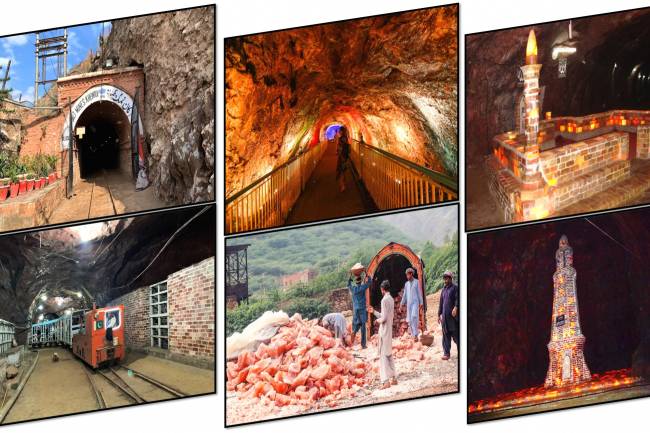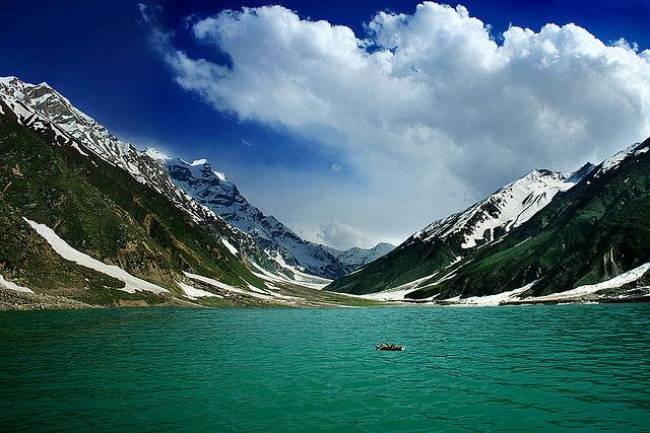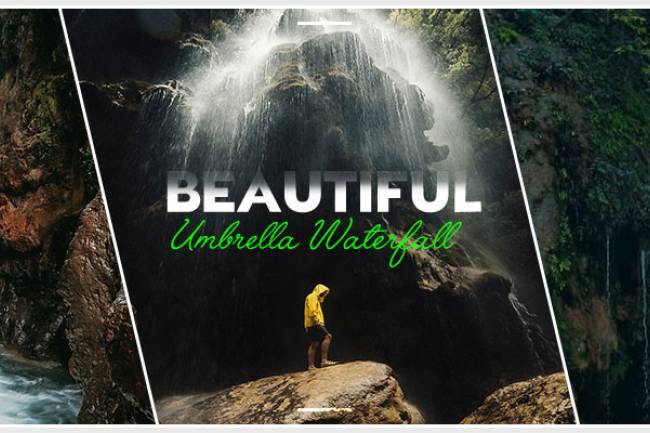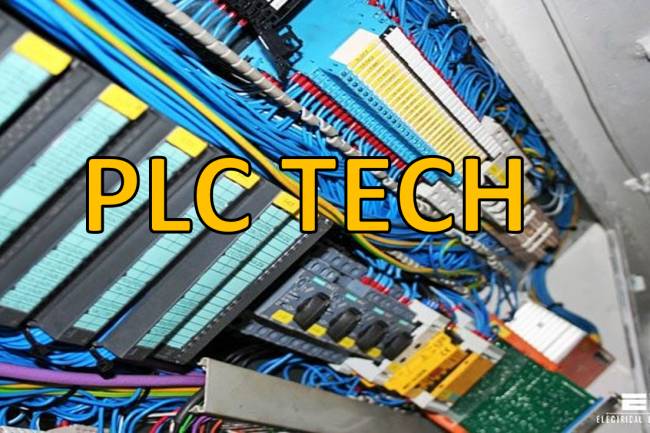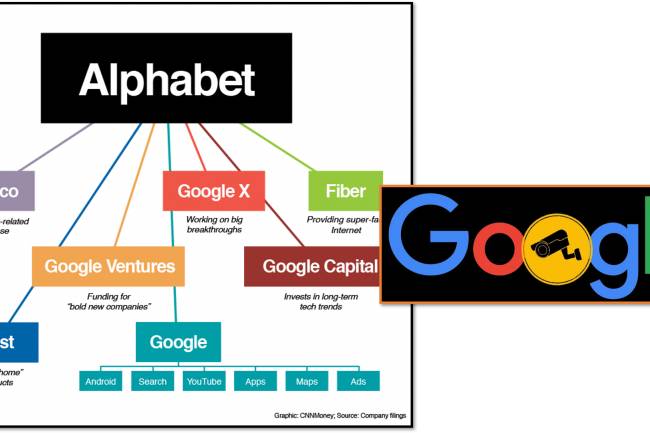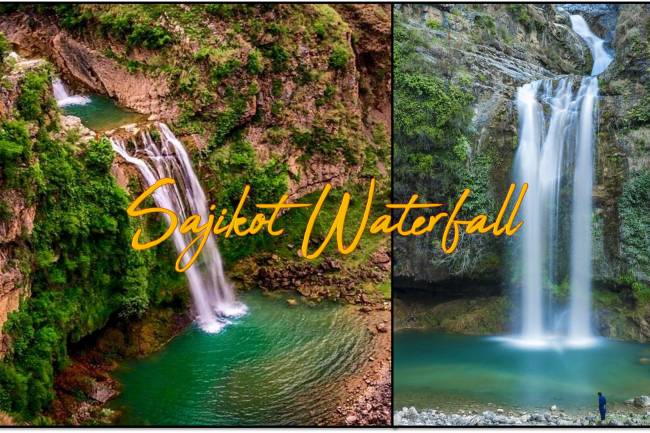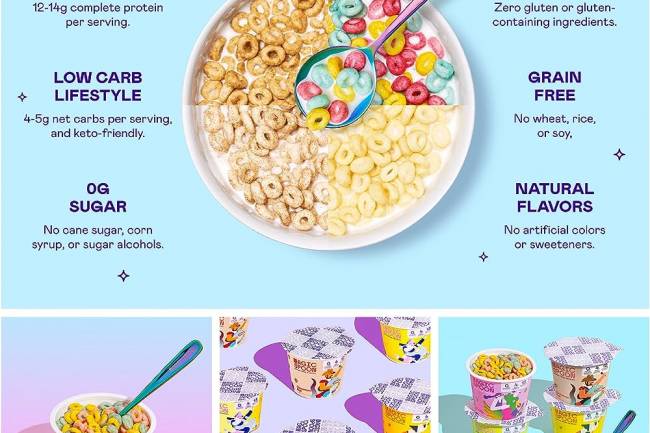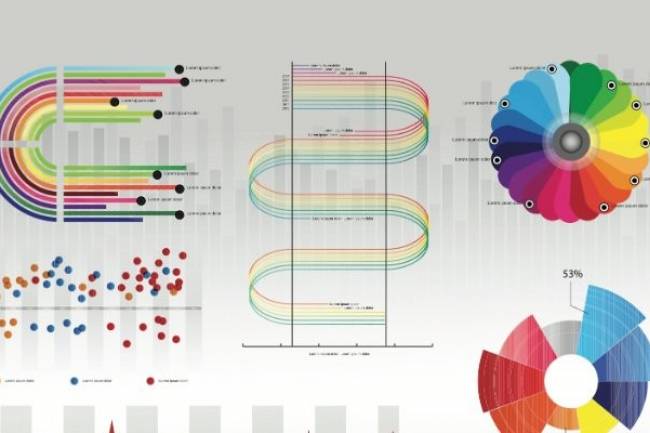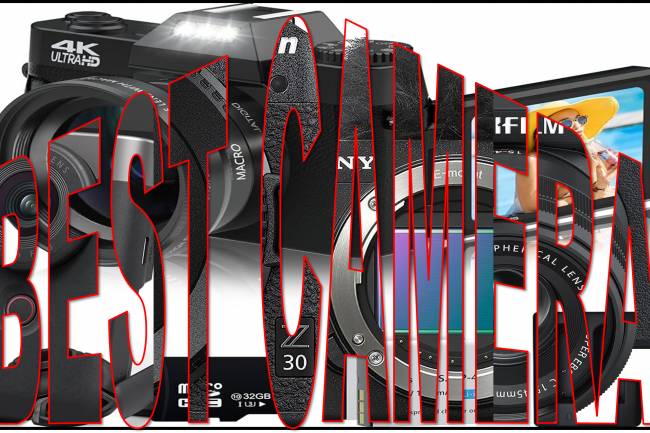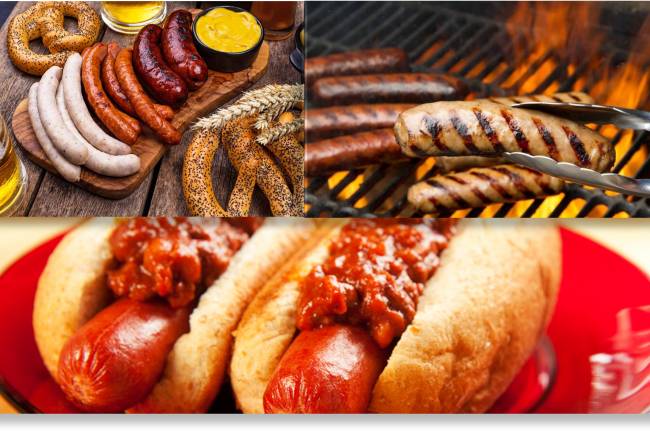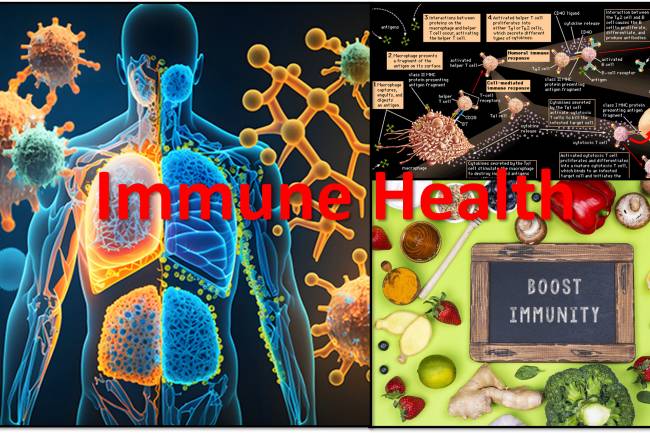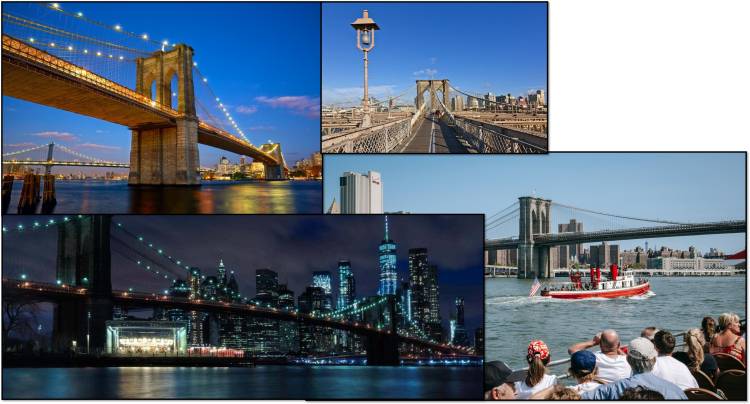
Brooklyn Bridge a Detail review with Nearby Attractions
Brooklyn Bridge a Detail Review
The Brooklyn Bridge was designed by John A. Roebling. Construction began in 1869 and was completed in 1883. At the time, it was the longest suspension bridge in the world. The Brooklyn Bridge attaches the boroughs of Manhattan and Brooklyn by crossing the East River.
Today, the magnificent Brooklyn Bridge stands in all its splendor, paying tribute to the triumph of one man's indomitable spirit and his determination to resist the elements. It is also a tribute to the engineers and their teamwork, and to their faith in a man half the world thought was crazy.
350,000 stale firecrackers found under the Brooklyn Bridge. Workers found a cache of water canisters, medical supplies, gauze bandages, and 350,000 stale firecrackers in a cavernous room beneath the Brooklyn Bridge's main entrance.
With a total length of 1,825 m (5,989 ft) and a main span of 486 m (1,595 ft), it was formerly known as the New York and Brooklyn Bridge and as the East River Bridge, but was commonly referred to as the Brooklyn Bridge, which became its formal name in 1915.
Table of Contents
Brooklyn bridge reviews and the Mexican Navy. 1
The Brooklyn Bridge in detail overview.. 1
Architecture and Engineering. 2
Cultural and Symbolic Significance. 2
Brooklyn Bridge Park: A Waterfront Gem.. 3
Main Features and Attractions. 4
Why go to Brooklyn Bridge Park?. 5
South Street Seaport: A Complete Guide. 5
Architecture and Preservation. 6
South Street Seaport Museum.. 6
Walking Highlights (Self-Guided Tour) 7
One World Trade Center: Full Review.. 8
Surroundings: World Trade Center Complex. 9
Cultural and symbolic influence. 9
A brief overview of the DUMBO Arts District in Brooklyn, New York: 9
Dumbo Arts District: Quick Overview.. 9
The Brooklyn Bridge in detail overview
The Brooklyn Bridge is one of New York City's most famous landmarks and one of the oldest suspension bridges in the United States. Here's a brief overview:
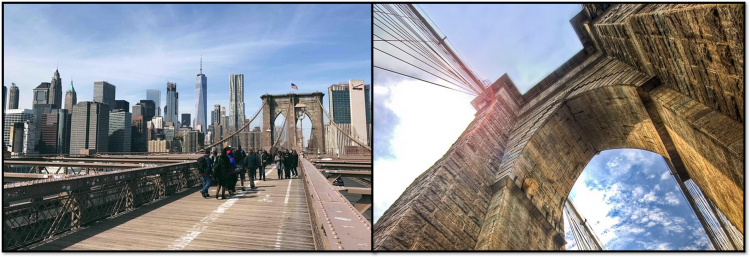
Fast Facts:
- Location: Connects Manhattan and Brooklyn across the East River.
- Completed: 1883
- Designer: John A. Roebling (completed by his son Washington Roebling)
- Length:
- You said:
Of course. Here's a detailed description of the Brooklyn Bridge, exploring its history, architecture, cultural impact, and significance:
Historical Background
The Brooklyn Bridge is not just a feat of engineering. It symbolizes the ambition and innovation of New York City in the late 19th century. When it opened on May 24, 1883, it was the longest suspension bridge in the world and the first to use steel for its cables.
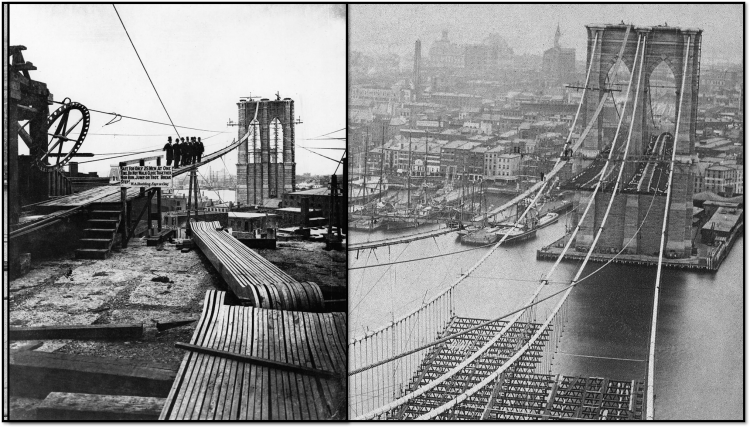
Beginning and Construction
Designed by: John Augustus Roebling, a German immigrant and civil engineer known for his suspension bridge design.
- Tragically, Roebling died of tetanus in 1869 after a freak accident while surveying the site.
- His son, Washington Roebling, took over as chief engineer but was incapacitated by caisson disease (decompression sickness).
- Notably, Washington's wife, Emily Warren Roebling, played a key role, providing project oversight and studying engineering, becoming one of the first women in American history to be recognized for a major infrastructure project.

Building Timeline
- Started: 1869
- Completed: 1883 (total 14 years)
- Workers used large pneumatic chambers (airlocks) to dig foundations deep into the riverbed.
- This process was dangerous. Dozens of workers died from accidents or "depressions."
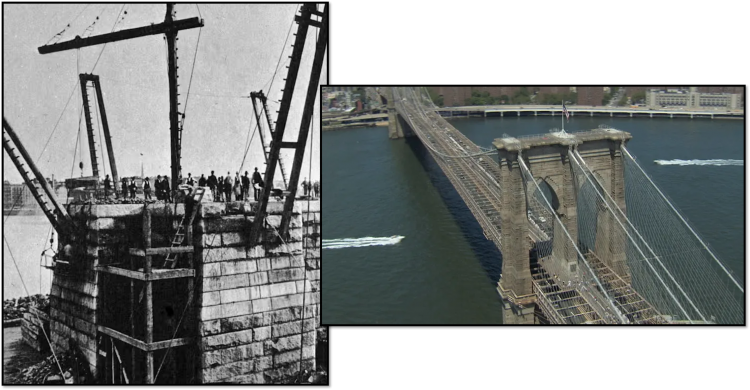
Architecture and Engineering
Important Features:
- Total Length: 6,016 feet (1,834 meters)
- Main Span: 1,595.5 feet (486.3 meters)
- Height: 276.5 feet (84.3 meters) above water
- Material: Limestone, granite, and Rosendale cement.
- Cables: Made of steel wire, with four main cables suspending the deck.
Cross Design:
This bridge is a hybrid between a cable-stayed and a suspension bridge, a rare design at the time. It has nine Gothic stone towers with pointed arches, which are functionally and visually iconic.
Use and Effect
Opening Day:
- It opened with a grand celebration on May 24, 1883.
- More than 150,000 people crossed the bridge on the first day.
- President Chester A. Arthur and New York Governor Grover Cleveland attended the opening ceremony.
City Landmarks:
- Originally designed for horse-drawn carriages, pedestrians, and railroad cars.
- Today, it is used by motor vehicles, pedestrians, and cyclists.
- It is an important connection between Manhattan and Brooklyn and a major tourist attraction.
Cultural and Symbolic Significance
In Art and Literature:
- It appears in the works of artists such as Joseph Stella and photographers such as Berenice Abbott.
- A symbol of progress and modernity in the early 20th century.
- Appears in countless films, music videos, and television shows.
Designation Status:
- A National Historic Landmark (1964)
- New York City Landmark (1967)
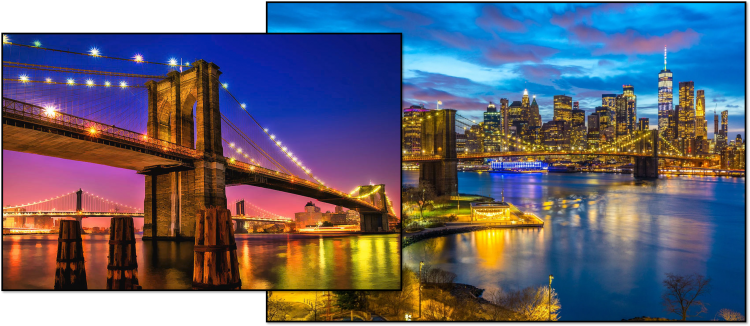
Interesting Facts
- Elephant Test: To demonstrate his strength, P.T. Barnum led a parade of 21 elephants across the bridge in 1884.
- During its construction, the bridge was one of the first examples of the use of compressed air for underwater work.
- At night, the bridge is beautifully lit and offers stunning views of the Manhattan skyline and the Statue of Liberty.
Brooklyn Bridge Trip
- Walking Route: High above the traffic; accessible from both Manhattan (near City Hall) and Brooklyn (near Brooklyn Heights and DUMBO).
- Best time to walk: Early morning for tranquility, or at sunset for the best views.
Nearby Attractions:
- Brooklyn Bridge Park
- South Street Seaport
- One World Trade Center
- Dumbo Arts District
Brooklyn Bridge Park
Of course! Here's a complete overview of Brooklyn Bridge Park, a vibrant urban oasis along the East River in Brooklyn, New York City.
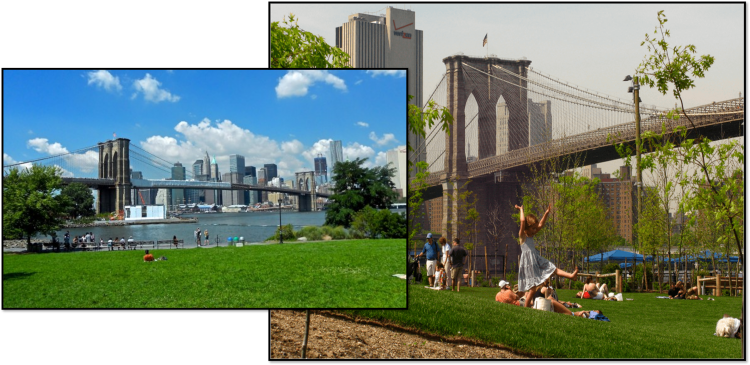
Brooklyn Bridge Park: A Waterfront Gem
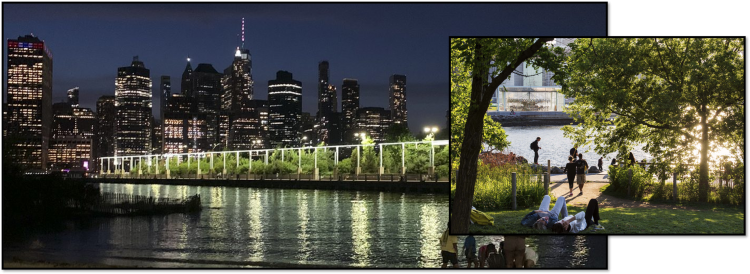
Location
Brooklyn Bridge Park stretches along Brooklyn's waterfront, from Atlantic Avenue in the south to J Street, just north of the Manhattan Bridge, and runs parallel to the East River. It is directly adjacent to the neighborhoods of Brooklyn Heights and DUMBO and offers panoramic views of Lower Manhattan, the Brooklyn Bridge, and the Statue of Liberty.
Overview and Purpose
Brooklyn Bridge Park is an 85-acre sustainable waterfront park that has transformed a once-industrial waterfront area into a world-class public space. Opened in phases beginning in 2010, the park is a symbol of urban revitalization, combining recreation, nature, culture, and design.
It is managed by Brooklyn Bridge Park Corporation, a nonprofit organization in partnership with the city.
Main Features and Attractions
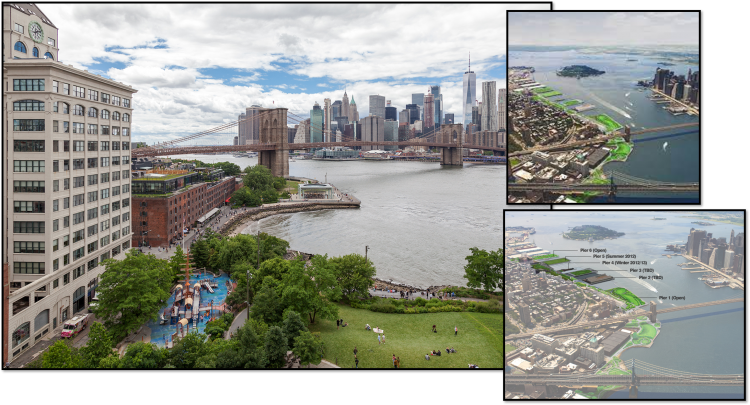
Piers (Ghat)
Brooklyn Bridge Park is built on or around several former shipping piers, each with unique features:
- Pier 1: Rolling hills, lawns, a promenade, and the famous Granite Prospect Amphitheater.
- Pier 2: Sports courts for basketball, handball, roller skating, and fitness equipment.
- Pier 3: Large main lawn for passive recreation, with shaded areas and seating.
- Pier 4: Beach area with a ramp for non-motorized watercraft such as kayaks.
- Pier 5: Soccer fields and picnic areas with grills.
- Pier 6: Playgrounds, sand volleyball courts, and ferry service. Nearby is a lush flower field and Slide Mountain.
Greenways and Walkways
- A 1.3-mile greenway runs through the park and is perfect for walking, biking, and jogging.
- It provides continuous access to the water with stunning views and seating areas.
Main Attractions
- Jean's Carousel: A beautifully restored 1922 carousel, enclosed in a glass pavilion designed by Jean Nouvel, located on the Empire Fulton Ferry section.
- Pebble Beach: A small natural area with rocks and sand where you can sit at the water's edge.
- Environmental Education Center: Offers programs for students, teachers, and the public.
Fun and Activities
- Kayaking: Free seasonal kayaking from Pier 2 or Pier 4 (offered by the Brooklyn Bridge Park Boathouse).
- Fitness Classes: Free outdoor yoga, Pilates, and cardio workouts in the summer.
- Outdoor Movies: Movies with a View series on the Harbor View Lawn at Pier 1 during the summer months.
- Winter Activities: Roller skating rink at Pier 2 and occasional pop-up winter events.
Family Areas
Multiple themed play areas, including:
- Water Lab (Pier 6)
- Slide Mountain and Swing Valley
- Plenty of open space for children to run and play safely.
- Family picnic areas and public restrooms are available throughout the venue.
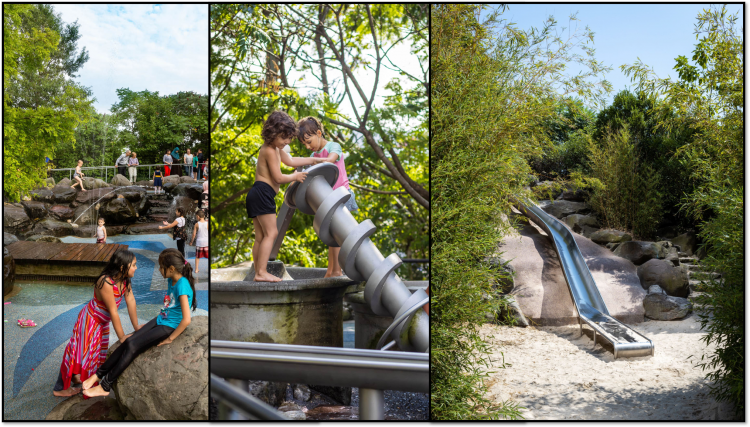
Arts & Culture
- Hosts public art installations and cultural events.
- Past exhibits have included artists such as Deborah Cass and Kara Walker.
- Concerts, dance performances, and community festivals are held throughout the year.

Lunch & Dinner
- Fornino (Pier 6): Neapolitan-style pizza with rooftop seating and a view.
- Locus Lobster (near Pier 1): famous for its lobster rolls and seafood.
- Smorgasburg Pop-ups: occasional foodie events.
- Nearby Restaurants in DUMBO and Brooklyn Heights: a wide variety of cafes, fine dining, and bakeries such as Almondine, Juliana's Pizza, and Time Out Market.
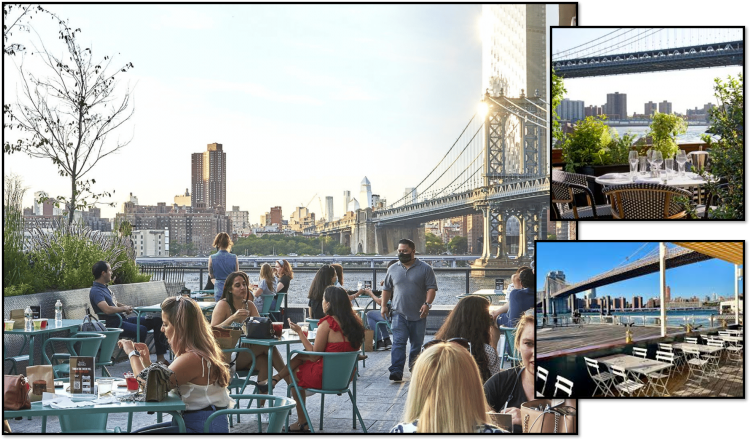
Access and Transportation
- Subway: Easily accessible via the A/C (High Street), F (York Street), 2/3 (Clark Street), or 4/5 (Borough Hall).
- East River Ferry: stops at Piers 1 and 6.
- Walking/Biking: from Manhattan to the Brooklyn Bridge via the pedestrian path, or by bike on the East River Greenway.
- Car: Nearby street parking or private garage.
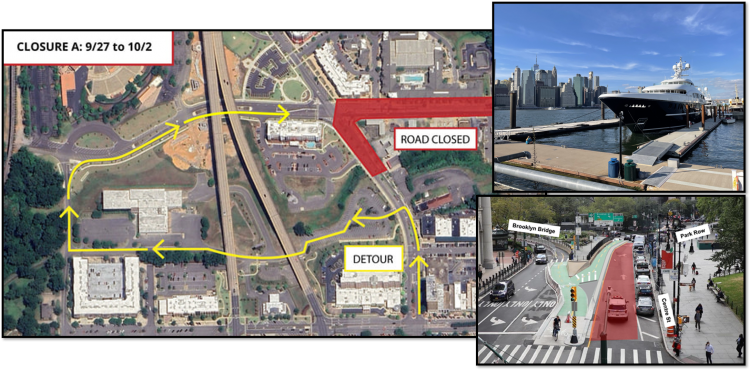
Durability and Design
Designed with flexibility and ecology in mind:
- Salt-tolerant plants
- Stormwater retention systems
- Reclaimed material (Brooklyn Bridge granite)
- Built to withstand sea level rise and flooding.
Why go to Brooklyn Bridge Park?
Brooklyn Bridge Park is more than just a green space: it's a living example of sustainable urban design and community engagement. With its natural views, captivating events, cultural activities, and family-friendly amenities, it's a must-see for locals and tourists alike.
- Would you like:
- A map of the park with all the attractions?
- A personalized hiking itinerary?
- Upcoming events and activities?
South Street Seaport
Detailed description of South Street Seaport, a historic and cultural district in Lower Manhattan that combines New York City's maritime past with modern dining, shopping, and entertainment.

South Street Seaport: A Complete Guide
Location
- Neighborhood: Lower Manhattan
- Boundaries: Roughly bordered by Fulton Street, South Street, John Street, and the East River.
- Nearby: Brooklyn Bridge, Wall Street, Battery Park, Pier 17, and the Financial District
Historical Significance
Original:
- Once the center of New York City's shipping industry in the 19th century.
- It features some of the oldest surviving architecture in the city.
- The area served as a major center of international trade in the 1700s and 1800s.
19th-Century Port:
- South Street was known as "Shipping Street."
- The port became a major hub for clipper ships and transatlantic trade.
- It played a significant role in making New York City a world economic capital.
Architecture and Preservation
- The Fulton Street Historic District includes restored buildings from the early 19th century.
- The classic cobblestone streets and red brick buildings offer a glimpse into the city's colonial and maritime past.
- Partially managed by the South Street Seaport Museum
South Street Seaport Museum
- Mission: To preserve and interpret New York City's maritime heritage
- Historic Ships:
- Wavertree: an 1885 iron-hulled sailing ship
- The Ambrose Lightship: a guided boat in New York Harbor in the early 20th century
- Pioneer: A restored 1885 schooner used for public navigation.
- Exhibits: Marine artifacts, ship models, maritime history, and Bowne & Co. printing presses operating out of stationery stores.
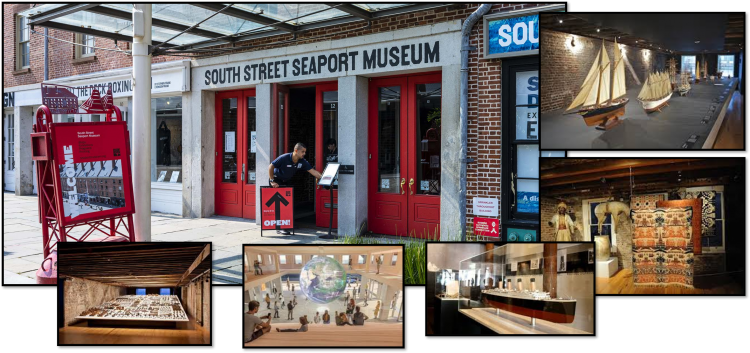
Things to Do
Pier 17
- A modern, renovated waterfront destination with:
- Rooftop concerts and events (live from Pier 17)
- Al fresco dining with panoramic skyline views
- Pop-up art installations and seasonal events (ice skating in the winter, salons in the summer)
Shops and Boutiques
- A mix of national brands and local artisan shops.
- Modern fashion, handmade crafts, and vintage finds.

Diet
- Fulton Stall Market: Year-round indoor/outdoor farmers market featuring local vendors
- The Jean-Georges Tin Building: A sprawling culinary destination with restaurants, markets, and bars inside a renovated historic fish market building.
- Waterfront Restaurants: Options range from high-quality seafood to rooftop cocktails overlooking the East River.
Events & Culture
- Live at Pier 17: Summer Rooftop Concert Series
- Weather Events:
- Winter Tree Lighting and Market
- Block Parties and Summer Movie Nights
- Pop-ups and Art Installations
- Art Exhibits: Often featuring contemporary.
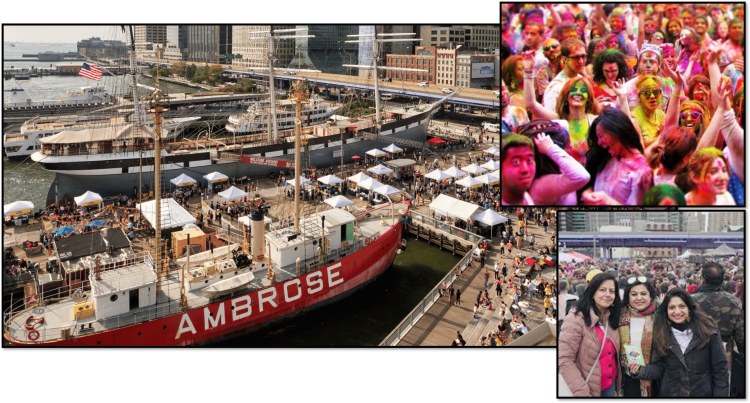
Walking Highlights (Self-Guided Tour)
- Start on Fulton Street, observing the cobblestones and 19th-century storefronts.
- Visit the South Street Seaport Museum and its historic ships.
- Walk to Pier 17 for river views and rooftop events.
- Explore the Ton Building for gourmet food and drinks.
- Walk along the East River Esplanade towar.
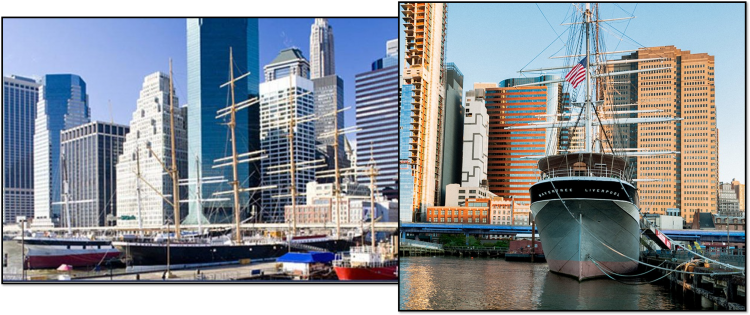
How to get there
- Subway:
- 2/3, 4/5 to Fulton Street
- A/C, J/Z to Fulton Street
- World Trade Center E2
- Walking: Easily accessible via the Brooklyn Bridge pedestrian path.
- Nice photo spots
- Pier 17 rooftop at sunset
- Wavertree ferry with skyscrapers in the background
- The cobblestone streets of Fulton Street.
- View of the Brooklyn Bridge from the East River waterfront
Overview
South Street Seaport is where old New York meets modern lifestyle: a fusion of preserved maritime heritage and contemporary urban experiences.
One World Trade Center
Here you will find a detailed description of One World Trade Center, also known as the Freedom Tower, one of the most important architectural and symbolic landmarks in the United States.
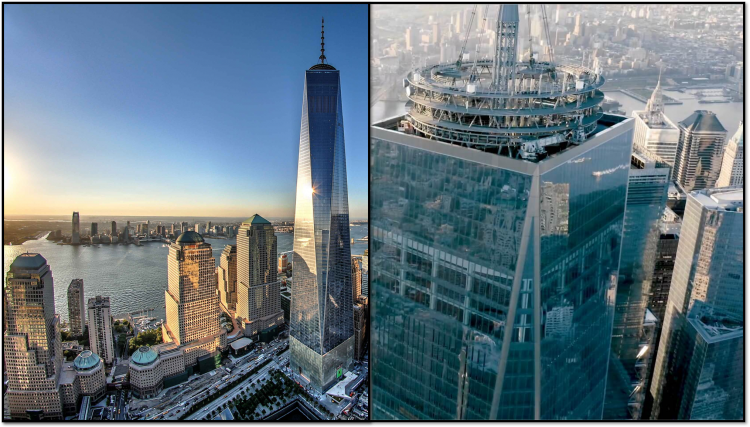
One World Trade Center: Full Review
Location
- Address: 285 Fulton Street, New York, New York 10007
- On the site of the original World Trade Center towers in Lower Manhattan, next to the September 11 Memorial & Museum
Overview
- One World Trade Center is the tallest building in the Western Hemisphere and the centerpiece of the World Trade Center complex. It was built as part of the reconstruction following the terrorist attacks of September 11, 2001, and is a symbol of resilience, renewal, and American unity.
Design and Architecture
Symbol
- The building's height, 1,776 feet, refers to the year the United States Declaration of Independence was signed.
- Its name and location make it a powerful reminder of the Twin Towers, while symbolizing a look toward the future.
Design Features
- Base: 200-foot concrete base for added security.
- Shape: Begins as a square, gradually becomes an octagon, then a glass parapet at the top.
- Glass Facade: More than 3,000 glass panels give it a crystalline appearance.
- Needle: The antenna reaches its final symbolic height. It also serves as a transmission tower.
inside structure
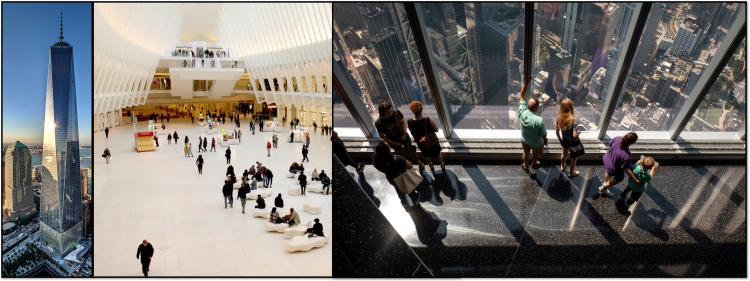
Building Use
Primarily office space
- House headquarters and offices for media, technology, and government organizations
- One World Observatory, a three-story observation deck and tourist attraction.
Building Experience
- 360-degree views of New York City, including:
- Statue of Liberty
- Empire State Building
- Brooklyn Bridge
- Central Park
- Features include:
- Sky Portal: A 14-foot glass disc that displays real-time views of the street below.
- See Forever Theater: Immersive film with clean New York visuals
Sustainability and Safety
- Eco-friendly features
- LEED Gold certified
- Includes rainwater harvesting, recycled materials, and energy-efficient systems.
Security
- Built to modern safety standards:
- Reinforced concrete core
- Dedicated emergency stairs
- High-tech surveillance and communication systems
- The base is blast-resistant and designed to withstand large events.
Surroundings: World Trade Center Complex
- Contains:
- 9/11 Memorial and Museum (reflecting pool and historical exhibits)
- Oculus Transportation Hub (designed by Santiago Calatrava)
- Freedom Park and St. Nicholas Greek Orthodox Church
Cultural and symbolic influence
- Represents the power of healing, resilience, and rebuilding.
- Often featured in:
- Films, documentaries, and news coverage
- September 11th events
- Artistic and literary representations of the United States after 9/11
A brief overview of the DUMBO Arts District in Brooklyn, New York:
Dumbo Arts District: Quick Overview
DUMBO (short for Down Under the Manhattan Bridge Overpass) is a vibrant creative neighborhood located between the Brooklyn and Manhattan Bridges along the East River. What was once a charming industrial area has transformed into one of New York City's most vibrant arts and cultural centers.
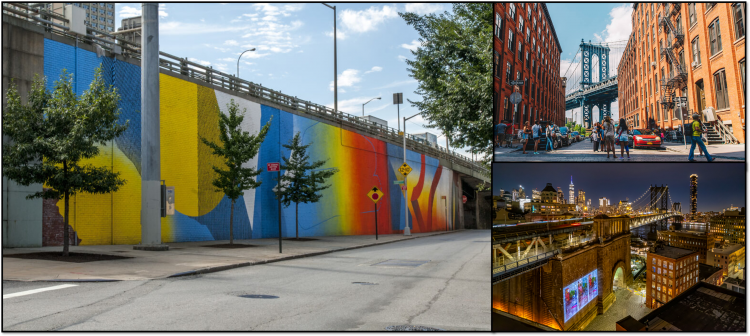
What makes it special:
- Historic industrial buildings now house art galleries, design studios, and tech startups.
- Public art installations are common on its cobblestone streets and waterfront parks.
- Home to organizations like St. Anne's Warehouse, Smack Mellon, and Klomping Gallery.
- DUMBO hosts open studios and gallery walks on First Thursdays, where visitors can meet local artists and explore their work.
- It offers stunning views of the Manhattan skyline and the Brooklyn Bridge, which are often featured in art and photography.
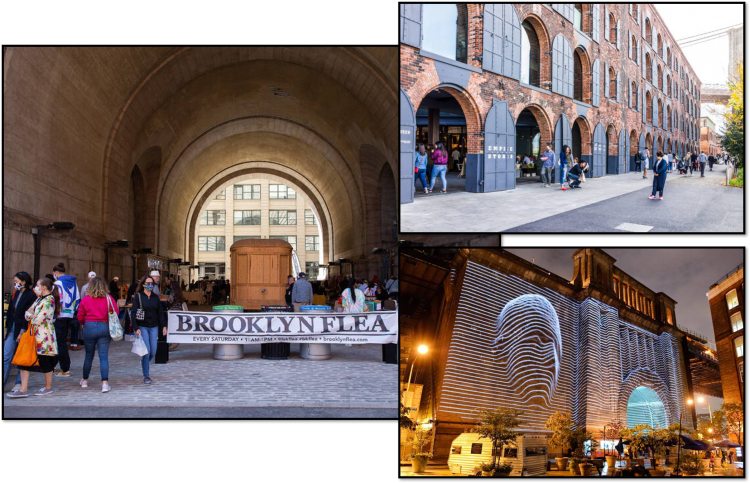
Environment:
Modern, artistic, and community-focused, with a combination of creativity, innovation, and historic charm.
